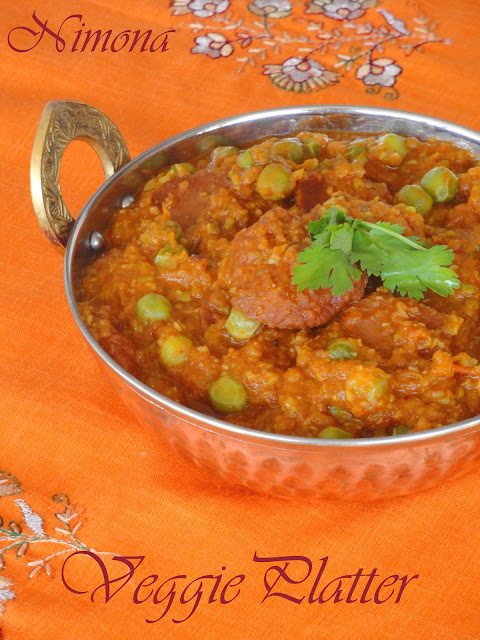I grew up in a household where every festive meal ended with soft, flaky and utterly delicious polis. My mother would go the extra mile even though she would serve us a platter full of mouthwatering dishes prepared single handedly, on each and every festival. No surprise, we kids were more interested in her food than the religious part. :)
Reminiscing my mother's polis, I prepared some a few days back with a few changes. I substituted wheat flour for the maida and used the carrot - almond halwa for the stuffing. They were delectable and remained softer till they were finished. They could be refrigerated for at least a week.
Ingredients: (for about 10 polis)
2 cups atta / wheat flour
1 cup minus 2 Tbsp milk (or as needed to form a firm dough)
2 tsp oil
& carrot - almond filling (Find the recipe here. Note to add a few more Tbsp of sugar when using as stuffing.)
Method:
* Combine the flour and oil in a mixing bowl. Gradually add milk and form firm dough. Let rest for at least an hour.
* Pinch out a lime sized portion of the dough and roll into a circle of about 4 inches diameter. Place about 2 -3 Tbsp carrot almond filling in the center. Bring the ends of the rolled disc together and cover the filling. Roll it carefully into a thin circle taking care that the stuffing does not spill out.
* Heat a tawa (Indian style iron griddle) or a shallow pan. Place the rolled poli and toast it until it turns golden brown both sides, using a tsp of ghee / oil.
1 cup minus 2 Tbsp milk (or as needed to form a firm dough)
2 tsp oil
& carrot - almond filling (Find the recipe here. Note to add a few more Tbsp of sugar when using as stuffing.)
Method:
* Combine the flour and oil in a mixing bowl. Gradually add milk and form firm dough. Let rest for at least an hour.
* Pinch out a lime sized portion of the dough and roll into a circle of about 4 inches diameter. Place about 2 -3 Tbsp carrot almond filling in the center. Bring the ends of the rolled disc together and cover the filling. Roll it carefully into a thin circle taking care that the stuffing does not spill out.
* Heat a tawa (Indian style iron griddle) or a shallow pan. Place the rolled poli and toast it until it turns golden brown both sides, using a tsp of ghee / oil.
Here is the hot, steaming Poli :)
Repeat the procedure with the remaining dough and the stuffing.
These polis were really thinner though they seem the opposite in the close up shot. :)
Here is one more wheat dish though I could not post all the entries as planned, for my Cooking with Seeds - Wheat event.
Wheat - Lentil Stew
Here is a wholesome, healthy, filling one pot meal.
Ingredients for 2 - 3 servings:
1/2 cup wheat berries (soaked for at least 24 hours)
1 cup lentils (masoor dal)
1 cup chopped veggies (beans, carrot, potato)
Salt to taste
Chili powder to taste
1/4 tsp garam masala / coriander powder / cumin powder
Lemon juice
Method:
Cook the wheat berries, masoor dal and vegetables either in a pressure cooker or stove top till the wheat berries turn tender.
Add salt, chili powder and any spice powder if using. Mix well and simmer for a couple of minutes more.
Squeeze some lemon juice while serving.
They both go to my Cooking with Seeds - Wheat, an event originally started by Priya Suresh.
Comment































